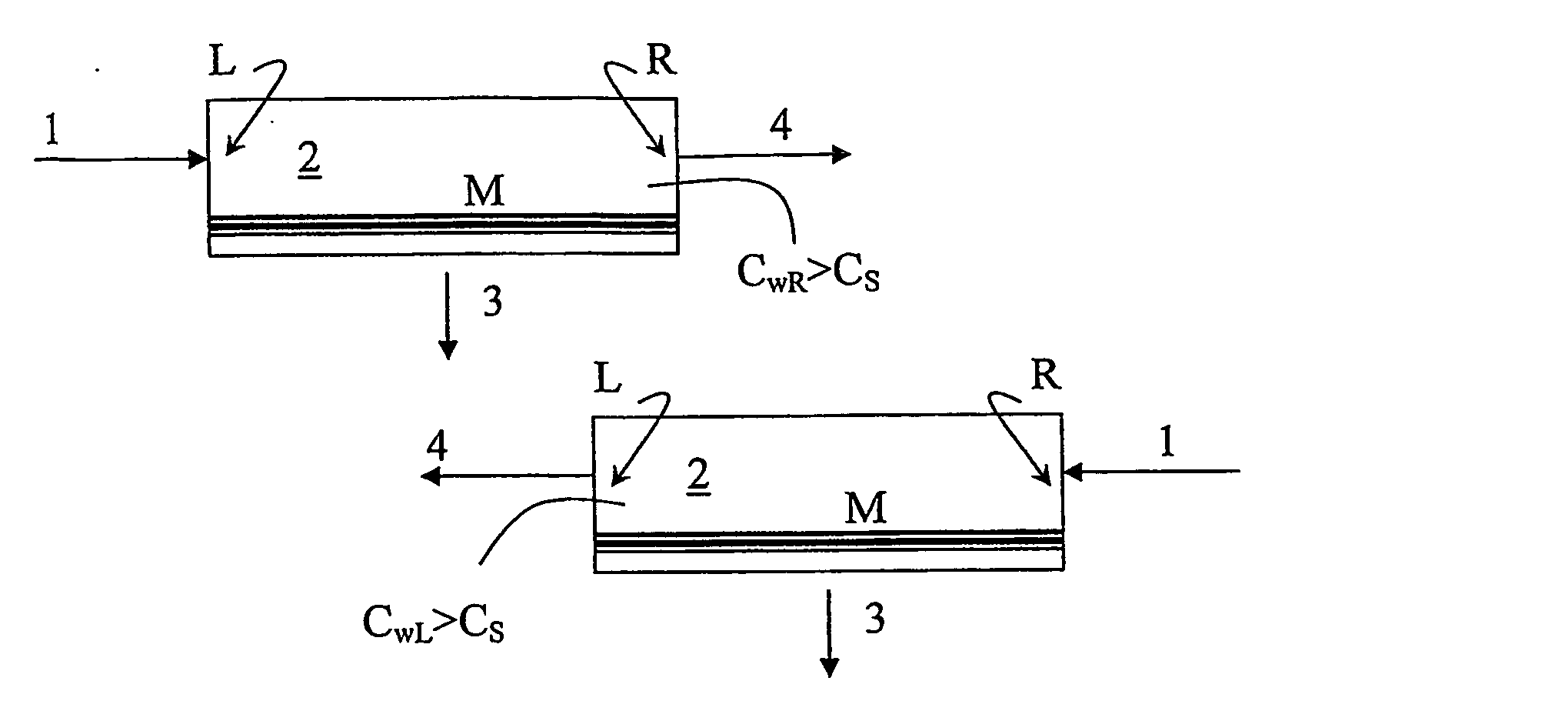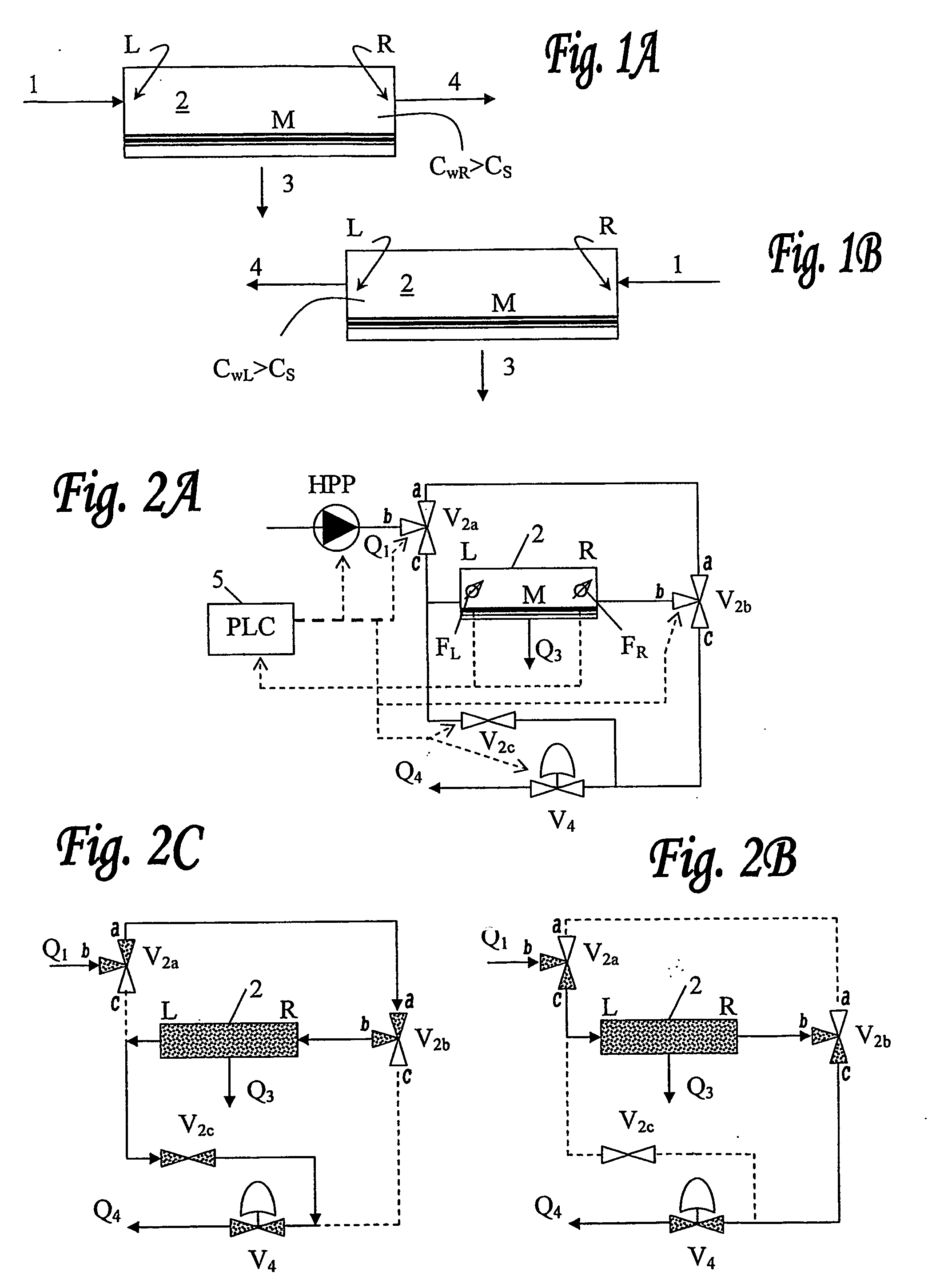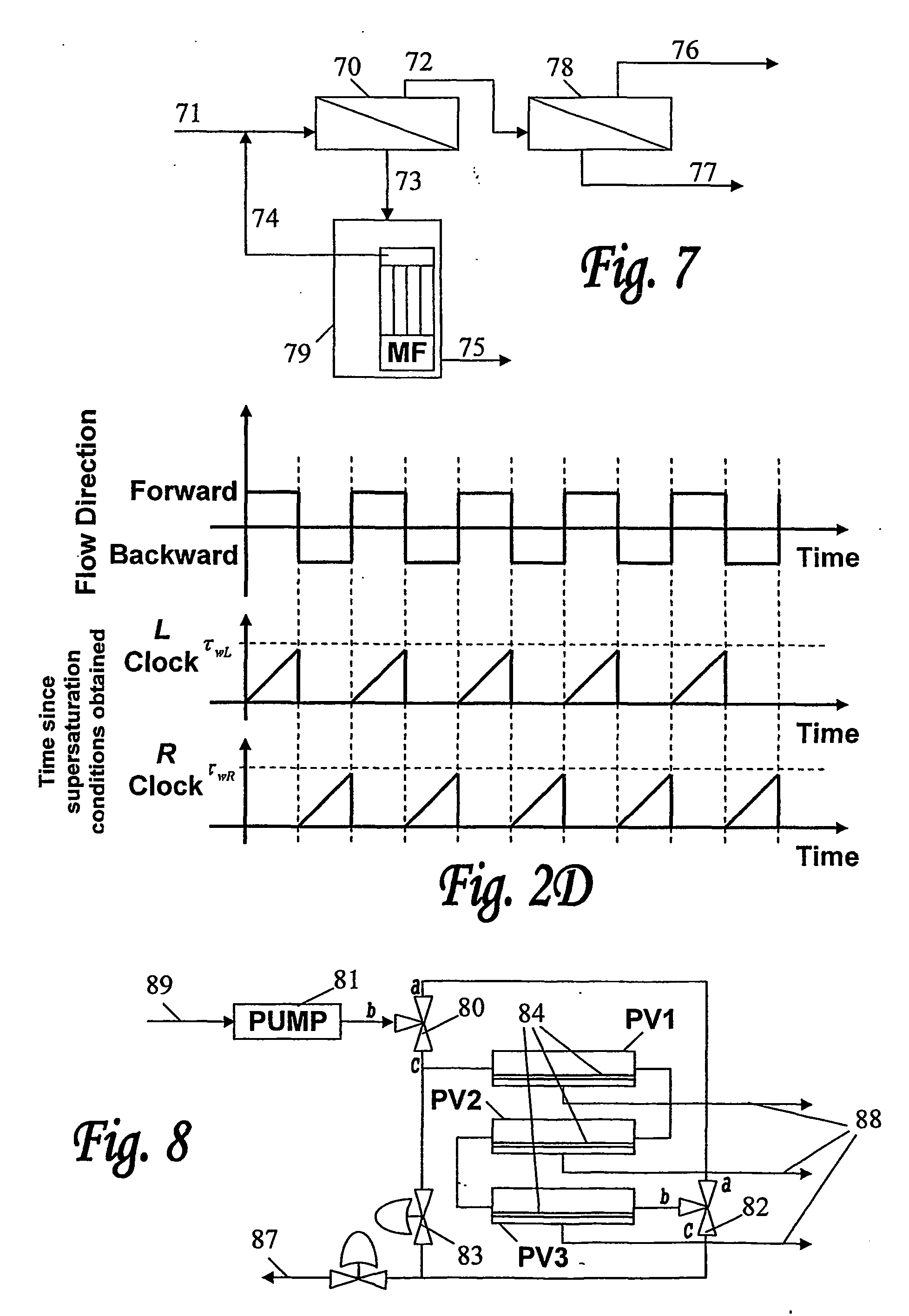Method and System for Increasing Recovery and Preventing Precipitation Fouling in Pressure-Driven Membrane Processes
a technology of precipitation fouling and membrane process, applied in the field of methods and, can solve the problems of membrane fouling, less effective, membrane fouling, etc., and achieve the effect of easy estimation of the induction tim
- Summary
- Abstract
- Description
- Claims
- Application Information
AI Technical Summary
Benefits of technology
Problems solved by technology
Method used
Image
Examples
example 1
[0095]This is a calculation example comparing performance of an RO unit desalting brackish water with calcium sulfate fouling potential using a standard tapered flow design and the example using reverse flow to reduce energy and chemical costs. This example uses the commercial membrane design software, Integrated Membrane Systems, of Hydranautics, Inc, but any standard commercial software could be used to generate the same results. Column 2 of table 2 represents the composition of the brackish water to be treated and is similar in its major ion composition to the water of wells sampled at Mashabe Sadeh in the Israel Negev region. The water composition is detailed in Table 2 here below.
TABLE 2Compositions in RO of Negev region brackish waterConcentrate(80%RawFeedrecovery)SpeciesCa+2206206973Mg+27272402Na+6246242632K+17.517.578NH4+0.30.31.3CO3−20.300HCO3−324115.3353SO4−2420586.52714Cl−103010304802SiO217.517.574GeneralPropertiespH7.466.7Temp. ° C.252525TDS2711.6267212042Conductivity471...
example 2
Measuring Calcium Sulfate Induction Times on Pilot RO Unit
[0098]A block diagram of the test unit that was used in this example is shown in FIG. 8. As shown in FIG. 8, three PVs, PV1, PV2 and PV3, were connected in series each containing 2 spiral wound elements 84 of ESPAL low pressure membrane from Hydranautics Inc. with 2.5 inch diameter and 40 inch length for a total of 6 elements in series (6×2.6 15.6 m2 total membrane area). The feed tank (not shown) was filled with 100 L of a solution of sodium sulfate to which an equimolar solution of calcium chloride was added. Two levels of feed solutions (89) were used: (i) 7.5 mM calcium sulfate (with 15 mM NaCl); and (ii) 10 mM calcium sulfate (with 20 mM NaCl). These feed solutions (89) were under-saturated with respect to calcium sulfate dihydrate. The saturation index for 7.5 mM solution was 0.32 and that for 10 mM calcium sulfate was 0.46. In order to generate super-saturation, the pressures were adjusted so that 65-82% of the feed fl...
example 3
[0111]The following synthetic solution was prepared to simulate a potentially scaling feed:
[0112]CaCl2: 2.5 mmol / L
[0113]NaHCO3: 5 mmol / L
[0114]NaCl: 5 mmol / L
in a volume of 150 L. The pH was adjusted to pH 7.2 with HCl requiring 16.7 mg / L. This solution has a calculated LSI of 0.04 (equivalent to a super-saturation ratio of 100.04=1.1). The calcium ion concentration for this solution will be 100 mg / L.
[0115]This solution is fed to the reverse flow unit shown in FIG. 8 at a flow rate of 1000 L / min and 700 L / min of permeate were removed through the RO membranes 84. This unit contains three pressure vessels in series, PV1, PV2 and PV3, each of which comprises two ESPA 2540 (2.5 in diameter, 40 inch long) spiral wound low pressure RO elements, wherein the membrane area of each membrane element is about 2.6 m2. This results in an average flux of 45 L / m2-h. The permeate flow 88 and concentrate flow 87 are returned to the feed tank (not shown) so that the composition of the feed flow 89 remai...
PUM
| Property | Measurement | Unit |
|---|---|---|
| Diameter | aaaaa | aaaaa |
| Time | aaaaa | aaaaa |
| Pressure | aaaaa | aaaaa |
Abstract
Description
Claims
Application Information
 Login to View More
Login to View More - R&D
- Intellectual Property
- Life Sciences
- Materials
- Tech Scout
- Unparalleled Data Quality
- Higher Quality Content
- 60% Fewer Hallucinations
Browse by: Latest US Patents, China's latest patents, Technical Efficacy Thesaurus, Application Domain, Technology Topic, Popular Technical Reports.
© 2025 PatSnap. All rights reserved.Legal|Privacy policy|Modern Slavery Act Transparency Statement|Sitemap|About US| Contact US: help@patsnap.com



